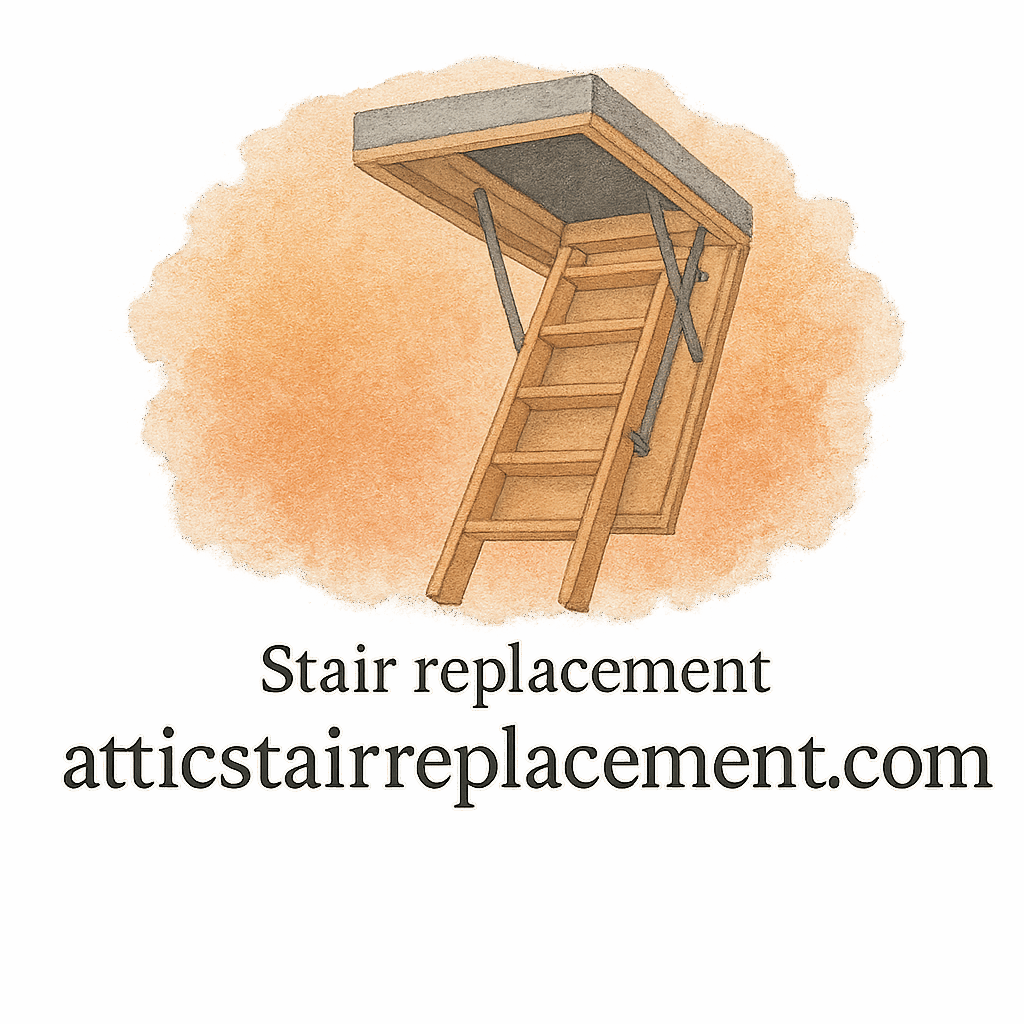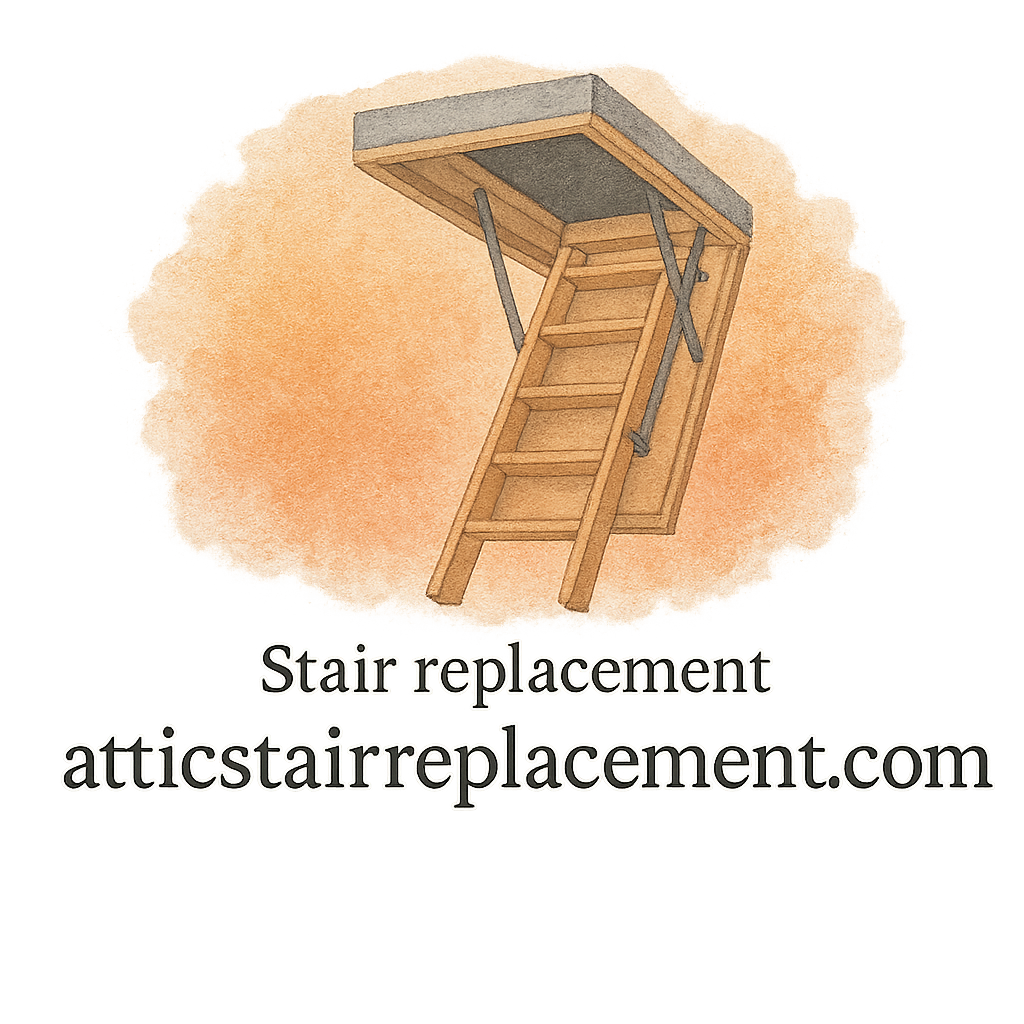Introduction
Thinking about replacing your attic stairs but not sure where to start? You’re not alone. Many homeowners struggle with outdated, creaky, or unsafe attic stairs that make accessing storage a headache. The good news? With the right tools, a little patience, and a clear guide, you can tackle DIY attic stair replacement at home without spending a fortune on contractors.
In this guide, we’ll walk you through 10 practical steps to replace your attic stairs safely and efficiently. Whether you’re motivated by safety concerns, convenience, or a home improvement project, this tutorial will give you the confidence to take on the task.
Why Replace Your Attic Stairs?
Safety Concerns with Old Stairs
Old attic stairs can become a serious hazard. Loose hinges, weak treads, or warped wood increase the risk of slips and falls. A DIY attic stair replacement ensures you have a sturdy, reliable set of stairs designed to support your household safely.
Convenience and Accessibility
Newer attic stairs are easier to operate, lighter, and designed with user comfort in mind. Whether you’re hauling holiday decorations or heavy boxes, smoother stair functionality makes attic access hassle-free.
Boosting Home Value
A well-installed, modern attic staircase doesn’t just improve functionality—it also adds to your home’s appeal. Prospective buyers often notice small upgrades like this, making it a worthwhile home improvement project.
Tools and Materials You’ll Need
Essential Tools
Before starting, gather:
- Tape measure
- Drill and screwdriver set
- Hammer
- Utility knife
- Level
- Saw (hand saw or circular saw)
Safety Gear
Safety should be a top priority. Keep handy:
- Work gloves
- Safety glasses
- Dust mask
- Hard hat (optional but recommended)
Recommended Materials
Depending on the type of stairs, you’ll need:
- New attic stair kit
- Screws, nails, and bolts
- Shims
- Trim boards for finishing
Step 1: Measure Your Attic Opening Accurately
This is the foundation of your project. Measure the width, length, and height of the attic opening carefully. Incorrect measurements often lead to frustrating installation problems or gaps that compromise safety. Pro tip: take each measurement twice to confirm accuracy.
Step 2: Choose the Right Type of Attic Stairs
Folding Attic Stairs
The most common choice for homeowners. They’re affordable, durable, and easy to install.
Telescoping Attic Stairs
Great for smaller spaces. These extend and retract smoothly, perfect for tight openings.
Electric Attic Stairs
For ultimate convenience, electric attic stairs operate with a button or remote control. Though pricier, they offer ease of use and luxury.
Step 3: Remove the Old Attic Stairs Safely
Carefully unscrew and detach the old unit. You may need an extra set of hands since attic stair frames can be heavy. Dispose of the old stairs responsibly, especially if they’re damaged or unstable.

Step 4: Prepare the Attic Opening
Clear debris, nails, and old trim from the opening. Use a saw to square off edges if needed. The goal is to have a clean, stable frame ready for your new stair unit.
Step 5: Install the Frame and Support
Install temporary support boards across the opening. These will hold the stair frame in place while you align and secure it. Make sure everything is level before fastening permanently.
Step 6: Position and Secure the New Stair Unit
Lift the new attic stair unit into place. Have a helper hold it while you fasten screws into the joists. This ensures a tight, stable fit that won’t shift under weight.
Step 7: Attach Hinges and Test Movement
Once secured, test the folding mechanism or sliding action. The hinges should move smoothly without squeaking or sticking. If adjustments are needed, loosen the screws slightly and reposition.
Step 8: Secure the Ladder to the Floor Joists
This step ensures the stairs support weight correctly. Fasten the ladder legs securely to the floor, trimming them if necessary for a snug fit. Use shims if the floor is uneven.
Step 9: Trim and Finish for a Clean Look
Add finishing trim around the opening for a polished appearance. Paint or stain to match your ceiling or attic decor. This step transforms the project from functional to professional-looking.
Step 10: Test, Adjust, and Inspect for Safety
Before calling it done, test the stairs several times. Walk up and down, check stability, and ensure the ladder locks firmly. Small adjustments now prevent big problems later.
Common DIY Mistakes to Avoid
Incorrect Measurements
Rushing the measuring process often results in ill-fitting stairs. Take your time here—it saves headaches later.
Weak Fastening
Loose screws or skipped bolts compromise the entire unit’s safety. Double-check that every fastener is secure.
Ignoring Weight Capacity
Every attic stair model has a weight limit. Ignoring it risks structural damage and injury. Always match the ladder to your needs.
Maintenance Tips for Long-Lasting Attic Stairs
Regular Inspections
Check your stairs at least twice a year for loose bolts, cracks, or wear and tear.
Lubrication and Tightening Bolts
A little WD-40 on the hinges and tightening bolts regularly can extend your stair’s life dramatically.
Repainting or Refinishing
If your ladder is wooden, a fresh coat of paint or varnish helps protect against moisture and adds durability.
When to Call a Professional
DIY isn’t always the right solution. If your attic opening needs resizing, your ceiling joists are damaged, or you’re not confident in your skills, calling a contractor is the safer route.
Budgeting Your DIY Attic Stair Replacement
DIY projects save money, but costs can add up. Expect to spend anywhere from $200–$600 on a stair kit, plus additional expenses for tools and trim. Compare this to professional installation, which often ranges from $800–$1,500. DIY offers serious savings if you’re up for the work.
Conclusion
Replacing your attic stairs yourself might seem intimidating, but by following these 10 steps for DIY attic stair replacement at home, you’ll realize it’s a manageable, rewarding project. From accurate measurements to the final inspection, every step brings you closer to a safer, more accessible attic. And the best part? You’ll enjoy the satisfaction of completing a significant home project with your own two hands.
FAQs
1. How long does DIY attic stair replacement take?
Most projects take 4–6 hours, depending on experience and whether adjustments are needed.
2. Can I install attic stairs without help?
It’s possible, but not recommended. Attic stair units are heavy and awkward to maneuver alone.
3. What’s the best attic stair type for small spaces?
Telescoping stairs are ideal for compact openings.
4. How much weight can attic stairs hold?
It varies, but most support between 250–375 lbs. Always check manufacturer guidelines.
5. Should I paint or stain wooden attic stairs?
Yes, sealing your wooden stairs improves durability and prevents damage.
6. Do attic stairs require maintenance?
Absolutely. Regular lubrication and bolt tightening keep them safe and durable.
7. What if I make a mistake during installation?
If you’re stuck, seek expert advice or call a contractor to avoid safety risks.


